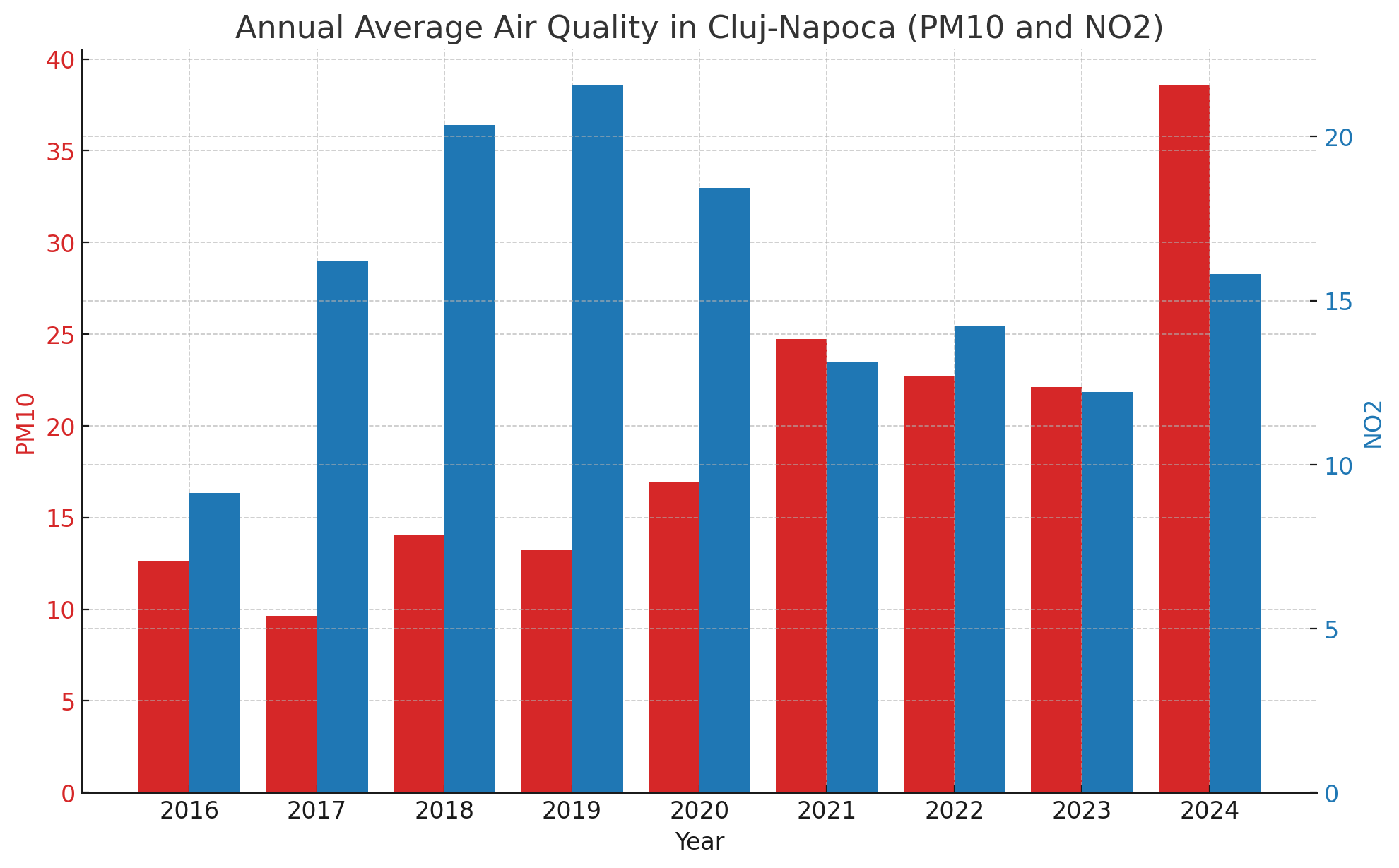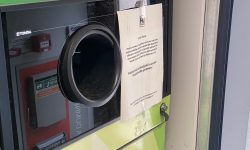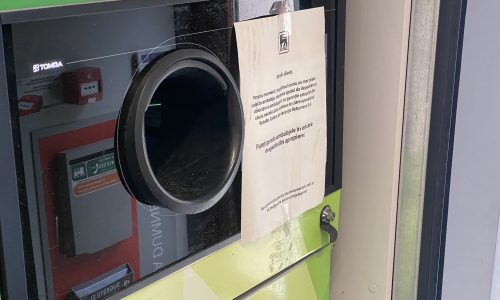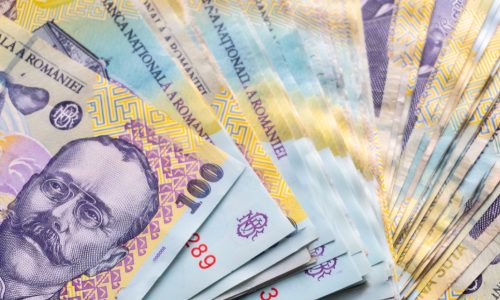In 2014, Cluj-Napoca stood out as a beacon of environmental quality within the European Union, lauded for having the cleanest air among its larger cities. This recognition, as reported by Romania Insider and We Demain magazine in collaboration with the Respire association, was a source of pride for both the residents and the civic leaders of this Romanian city.
However, recent data and observations indicate that Cluj-Napoca is grappling with the pressures of urbanisation and increased vehicular traffic, challenging its once pristine air quality.
From Best to Pressured: A Closer Look at the Data
Recent analysis of air quality data in Cluj-Napoca paints a concerning picture of rising pollution levels. The highest recorded PM10 level reached 93 µg/m³ on July 30, 2021, significantly surpassing the World Health Organization's (WHO) guideline of 20 µg/m³ for annual averages. Such spikes are indicative of acute pollution events, likely influenced by increased road traffic, construction, and seasonal factors.

Moreover, the city saw a peak NO2 level of 86 µg/m³ on February 12, 2020, more than double the WHO's recommended limit of 40 µg/m³. This highlights the substantial impact of vehicular emissions on the city's air quality, signalling a critical area for intervention.
The annual average concentrations further underscore the gravity of the situation. In 2016, the PM10 and NO2 levels were relatively controlled at approximately 12.6 µg/m³ and 9.1 µg/m³, respectively. However, by 2024, these figures had climbed to 38.6 µg/m³ for PM10 and 15.8 µg/m³ for NO2, revealing a disturbing upward trend in air pollution.

Citizens' Concerns and Urban Challenges
Residents of Cluj-Napoca have voiced their anxieties over the noticeable increase in road traffic and the consequent air pollution. The transformation of green spaces into concrete urban areas, coupled with the felling of mature trees for development projects, has sparked further worry about the city's environmental direction. These changes not only alter the cityscape but also contribute to the declining air quality, diminishing the urban greenery that once helped absorb pollutants.
Mature trees are more effective in improving air quality. Their extensive canopy and root systems are better at capturing air pollutants and producing oxygen. New trees, which were planted by the administration will eventually provide these benefits, but it takes years or even decades to match the capabilities of mature trees.
City Initiatives and the Path Forward
In 2020, Cluj-Napoca Mayor, Emil Boc, announced that half of the city's public transport was non-polluting and the ambitious plan to make the entire public transport fleet non-polluting by 2026. This initiative represents a proactive step towards reducing one of the major sources of air pollution—transport emissions.
He also introduced “Vinerea Verde” (Green Fridays), which allows people to use public transport for free on Friday and “Health Tickets”, where people can perform a quick workout in exchange for a free bus ticket in addition to significant improvements to dedicated bus lanes on major streets crossing the city.
The COVID-19 pandemic and the resulting lockdowns which began in March 2020, offered a temporary glimpse into the potential benefits of reduced traffic on air quality. During this period, a brief improvement in PM10 and NO2 levels was observed, highlighting the significant impact of vehicular traffic on the city's air environment.
Looking Ahead
Cluj-Napoca's journey from being the EU's top city for air quality to facing the challenges of pollution and urban development is a stark reminder of the delicate balance between growth and sustainability. The city's efforts to improve public transportation and the temporary respite provided by pandemic-related lockdowns point towards potential strategies for mitigating pollution.
However, it's clear that for Cluj-Napoca to reclaim and maintain its reputation for excellent air quality, a comprehensive approach is required. This includes not only enhancing public transport and reducing vehicular emissions but also preserving and expanding green spaces, managing urban development thoughtfully, and engaging the community in environmental stewardship.
As our city navigates these challenges, the commitment of city officials, developers, and residents to sustainable practices will be crucial. With informed strategies and collective action, Cluj-Napoca can strive to become once again a model of urban environmental health, ensuring a high quality of life for its residents and setting a benchmark for cities worldwide.





